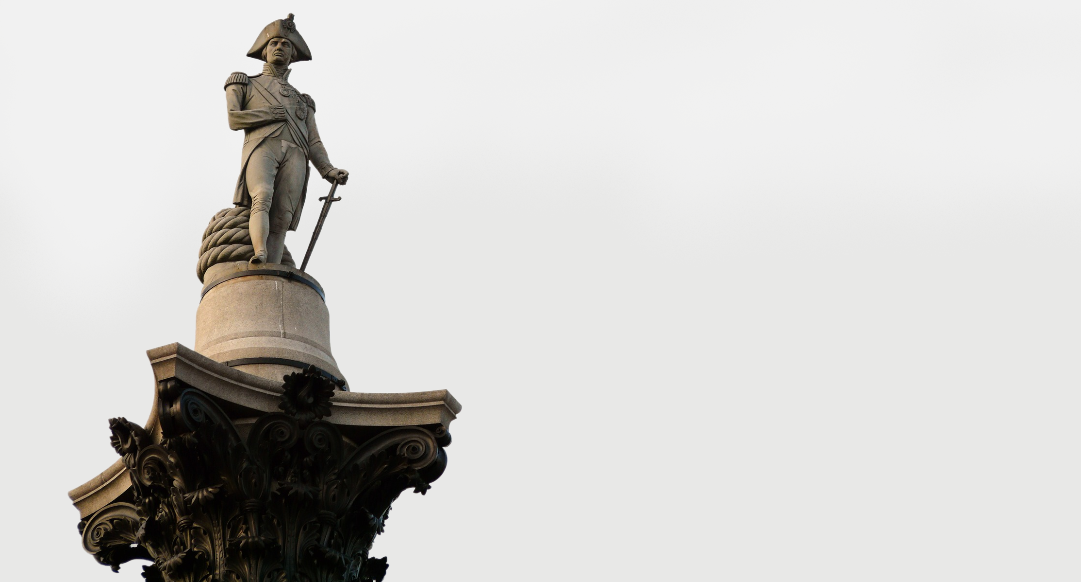
The Battle of the Nile, also known as the Battle of Aboukir Bay, took place on 1st August 1798. It was a naval battle between the British Royal Navy and the Navy of the French Republic.
Dubbed “the most overwhelming naval victory in the age of sail” by historians at the Royal Navy, here is everything you need to know about another one of Britain’s most notable victories…
The French Revolutionary Wars
War had broken out between the French Republic and other European powers in 1792, which was initiated due to the horrifying events of the French Revolution. These wars lasted until 1802, therefore, the Battle of the Nile was a significant chapter within this large conflict.
The War of the Second Coalition, also known as the second stage of the French Revolutionary Wars, began in 1798. This was a result of Napoleon Bonaparte instigating an invasion of Egypt as well as trying to hold back Britain from expanding territories.
Whilst the French were planning their attack in the Mediterranean, the British government became aware of their motives and gave instructions to the Commander in Chief of the British fleet, John Jervis, to dispatch ships and monitor the French movements, under the command of Lord Nelson.
Whilst monitoring the French naval fleets, Nelson and his squadron were struck by a powerful storm which destroyed HMS Vanguard, Nelson’s flagship, and forced the fleet to disperse and return to Gibraltar. This allowed Napoleon to set sail from Toulon and head south-east. Back at the port, Nelson was given reinforcements from Lord St Vincent, which brought his fleet to a total of seventy-four gunships.
In July 1798, the Royal Navy Officer, Captain Troubridge, was informed that the French had sailed east, so Nelson and his fleet focused their attention on the Egyptian coastline, reaching it by the 1st August.
The Battle of the Nile
Vice-Admiral François-Paul Brueys d’Aigalliers commanded the French fleet to anchor at Aboukir Bay, as the shoals gave protection when forming a battle line. The flagship L’Orient, carrying 120 guns, was positioned in the centre of the fleet. This was a massive error for Brueys, as it left enough room between the front and back ships for the British to slip in between the shoals.
This meant that the French fleet were left vulnerable, especially as they were only prepared on one side. They also had to send search parties out to bring back supplies for the exhausted and starving crew, which meant that a large number of sailors were away from the ships at the time.
By 6:00pm that evening, the British ships entered Aboukir Bay with Nelson giving the orders for an immediate attack. Brueys, aware of the British fleets, held back as he believed that Nelson would not attack so late in the day. This was a massive mistake from the French, as it allowed Nelson and his crew to execute their plans with great precision.
The British took advantage of the large gap between the ships and the shoals, and HMS Goliath opened fire from the port side, with five more ships acting as backup. In the meantime, the remaining British fleets attacked the starboard side, and caught them in the crossfire. After three hours, the British has managed to gain five French ships, but the fleet centre was still very much well defended.
The battle raged on, and at around 9:00pm, Brueys’ flagship, L’Orient, caught fire, with Brueys still onboard and wounded. Within the hour, L’Orient had completely exploded, mainly due to the paint and turpentine which was stored on the ship.
During the battle, Nelson had sought medical assistance to help him recover from a blow to the head. He then emerged to the deck of HMS Vanguard to witness the unfolding of Britain’s victory. The fighting continued well into the night, resulting in just two of the French ships and two frigates being able to avoid destruction by the British navy army.
Aftermath
This battle took the lives of 218 British seamen, and approximately 677 were wounded. Amongst the list of casualties was Captain Westcott, five lieutenants and ten junior officers. The French casualties however were much higher, with estimates suggesting a total of at least 2,000 seamen. With Brueys being killed and Admiral Blanquet being wounded, there was also four captains who died and seven others who were injured.
The French ships also suffered severe damage, with only three of them being sufficiently repaired for frontline service. Even weeks after the battle, bodies were washed up along the Egyptian coast, many of which were decaying slowly due to the heat.
Nelson’s victory was a momentous achievement, and many historians regarded the battle as the most significant of his career, even greater than the Battle of Trafalgar which took place seven years later. Mass celebrations occurred across the country, with victory feasts being held and church bells being rung. Nelson was also made Baron Nelson of the Nile.
You can celebrate Britain’s greatest naval commander with this incredible sovereign range, released to mark the 225th anniversary of Nelson’s victory at the Battle of the Nile, HERE.


